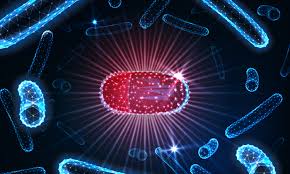
Breaking News
 $11 Trillion Quietly Moved - Americans Will Freeze & Obey When Market Collapse Hits : Chase Hughes
$11 Trillion Quietly Moved - Americans Will Freeze & Obey When Market Collapse Hits : Chase Hughes
 Econ 101 - 2026 Early Economic Forecast
Econ 101 - 2026 Early Economic Forecast
 Buy'r breaks the Blackrock monopoly- How the corporate club controls America
Buy'r breaks the Blackrock monopoly- How the corporate club controls America
 An AI Expert Warning: 6 People Are (Quietly) Deciding Humanity's Future! We Must Act Now!
An AI Expert Warning: 6 People Are (Quietly) Deciding Humanity's Future! We Must Act Now!
Top Tech News
 Build a Greenhouse HEATER that Lasts 10-15 DAYS!
Build a Greenhouse HEATER that Lasts 10-15 DAYS!
 Look at the genius idea he came up with using this tank that nobody wanted
Look at the genius idea he came up with using this tank that nobody wanted
 Latest Comet 3I Atlas Anomolies Like the Impossible 600,000 Mile Long Sunward Tail
Latest Comet 3I Atlas Anomolies Like the Impossible 600,000 Mile Long Sunward Tail
 Tesla Just Opened Its Biggest Supercharger Station Ever--And It's Powered By Solar And Batteries
Tesla Just Opened Its Biggest Supercharger Station Ever--And It's Powered By Solar And Batteries
 Your body already knows how to regrow limbs. We just haven't figured out how to turn it on yet.
Your body already knows how to regrow limbs. We just haven't figured out how to turn it on yet.
 We've wiretapped the gut-brain hotline to decode signals driving disease
We've wiretapped the gut-brain hotline to decode signals driving disease
 3D-printable concrete alternative hardens in three days, not four weeks
3D-printable concrete alternative hardens in three days, not four weeks
 Could satellite-beaming planes and airships make SpaceX's Starlink obsolete?
Could satellite-beaming planes and airships make SpaceX's Starlink obsolete?
Here's how to eat after taking antibiotics, according to science

That's because the disease-fighting pills blast all of the bacteria in your gut, whether they're helpful or not, and it can take time for this community to rebuild itself after completing a course of the medication. This can lead to gastrointestinal distress including diarrhea, gas, and other types of stomach upset. A researcher at the University of Chicago (UChicago) likens the effects of antibiotics to a forest fire in the gut and compares your diet to the way in which the ecosystem develops afterwards.
"The mammalian gut microbiome is like a forest, and when you damage it, it must have a succession of events that occur in a specific order to restore itself back to its former health," said UChicago's Eugene B. Chang. "When you are on a Western diet, this does not happen because it doesn't provide the nutrients for the right microbes at the right time to recover. Instead, you end up with a few species that monopolize these resources, and don't set the stage for other organisms that are required for recovery."
Chang is the senior author on a study that looked at the effect diets might have on rebuilding the gut microbiome – the community of microbes living in the colon – after the sometimes devastating effects of antibiotics.
He and his team started with two groups of mice. One was fed food mimicking a typical Western-style diet (WD), which is to say it consisted of high-fat and low-fiber foods. The other group ate regular mouse chow (RC), which is low-fat and has a wide range of plant fiber, much like the Mediterranean diet.
The team then gave both groups of mice a course of antibiotics. Finally, in an attempt to restore their gut microbiomes to their pre-antibiotic states, they used fecal microbial transplants (FMT) in which feces from healthy mice who weren't treated with antibiotics were introduced to the colons of the test subjects.
What they found was that the approach worked for the mice who were on the RC diet; their colons were able to allow the reestablishment of a wide range of beneficial bacteria that had been destroyed by the antibiotics. This was true for mice that were on the RC plan before antibiotic treatment as well as those who were on the WD plan before treatment and then switched to the RC plan afterwards.
However, for the mice who had been on the WD plan before and after antibiotic treatment, the FMT simply didn't work; the colons of those mice were unable to reestablish a colony of helpful bacteria. What's more, the researchers found that the mice on the WD plan were also more susceptible to Salmonella infections.

 First totally synthetic human brain model has been realized
First totally synthetic human brain model has been realized Mach-23 potato gun to shoot satellites into space
Mach-23 potato gun to shoot satellites into space

